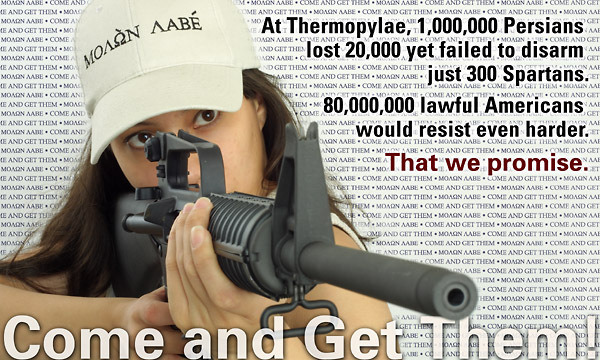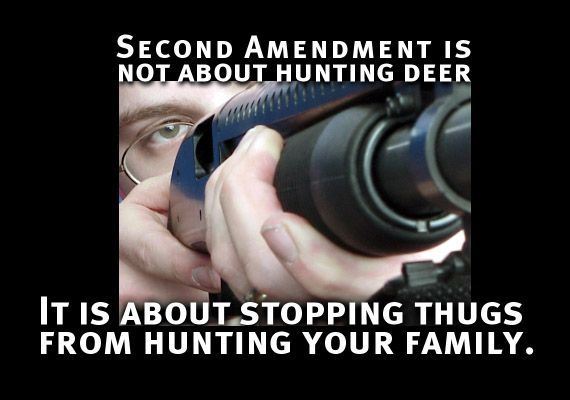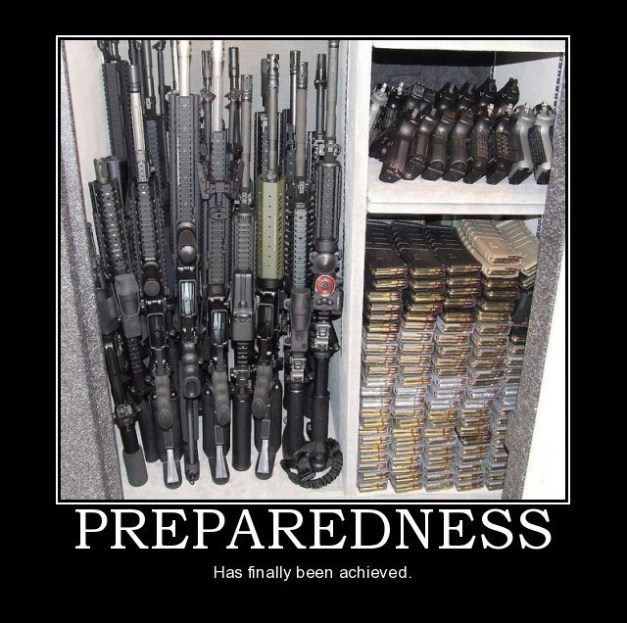“To preserve liberty, it is essential that the whole body of the people always possess arms, and be taught alike, especially when young, how to use them.”Wisconsin, Aurora, Virginia Tech, Columbine, Newtown. By the time you read this column, there may well be a new locale to add to the list. Such is the state of enabled and murderous mayhem in the United States.
(Richard Henry Lee, Virginia delegate to the Continental Congress, initiator of the Declaration of Independence, and member of the first Senate, which passed the Bill of Rights.)
“A well regulated Militia, being necessary to the security of a free State, the right of the people to keep and bear arms, shall not be infringed.”
(Second Amendment to the Constitution.)
Gun advocates say that guns don’t kill people, people kill people. The truth, though, is that people with guns kill people, often very efficiently, as we saw so clearly and so often this summer. And while the right to bear arms might be written into the Constitution, we cannot keep pretending that this right is somehow without limit, even as we place reasonable limits on arguably more valuable rights like the freedom of speech and due process.
Illinois’ last-in-the-nation prohibition on carrying concealed weapons has been struck down. The mass killings at a Connecticut elementary school on Friday will likely renew a serious national debate about an assault weapons ban and the Second Amendment.
Reports from Newtown, Conn., indicate that multiple shots were fired by a man who was dressed in assault gear, who had three weapons. This is a case of random mental derangement. Arming every teacher in every school is more a risk of than a safety against this.
The shooting comes right after another man opened fire inside an Oregon mall on Tuesday in an incident that left three people dead. The gun used the shooting, an AR-15 semi-automatic rifle, jammed during the attack, and it was a stolen weapon.
Since April, there have been mass killings in Oakland, Calif. (7 dead), Aurora, Colo. (12 dead), Oak Creek, Wis. (6 dead), Minneapolis (5 dead), Brookfield, Wis. (3 dead), Portland, Ore. (2 dead) and Newtown, Conn. (27 dead).
Talk of renewing the national Federal Assault Weapons ban, which expired in 2004, was being debated after the Clackamas Town Center shooting, and there will be more discussion about asking Congress to pass a stricter ban, with no time limit.
But the path of the any Assault Weapons ban becoming a reality faces several major obstructions.
First, gun ownership is at the core of the Constitution’s Second Amendment, which grants citizens the rights to bear arms.
When the original Federal Assault Weapons ban was passed in 1994, gun rights groups decided not to pursue a challenge through the court system. An August 2012 analysis from Politico shows that given the recent history of assault weapon court cases, there is a strong indication that the NRA would pursue a Second Amendment challenge up to the Supreme Court—if a national law were passed again. And based on a 2008 Supreme Court decision, the fate of a Federal Assault Weapons case in front of the court could be problematic.
The decision in District of Columbia v. Heller found that while citizens had the right to keep guns for self-defense, the court also agreed with an older ruling that “finds support in the historical tradition of prohibiting the carrying of dangerous and unusual weapons.”
That ruling was restricted to people who lived in federal enclaves.
A subsequent ruling in 2010 that reinforced the right of gun ownership and that it extended to states and towns. But for any challenge to take place to a national gun law, Congress would have to pass a new law first.
Guns are tools, tools of death. Their function is to kill. All animals must kill to survive, and many must kill sentient beings. Among mammals many species kill their own kind. The cuddly hamster will kill its cage mate during its sleep and eat out its brain for breakfast. Apes, not only human, carry out organized attacks into other clans. From this perspective there is nothing special about humans killing each other for whatever circumstance.
However man is supposed to be above instinct and there is a claim of morality and rationality. Nevertheless, through history the morality of killing has proven to be intractable. Despite the fact that many moral systems purport to ban killing, there are always ifs and buts, and even strict pacifist systems like Janism agree that violence in self-defense can be justified, and they agree that a soldier who kills enemies in combat is performing a legitimate duty. Some Christians sects, like the Mennonites, teach that because Jesus taught his followers to love everyone, killing, even in war, is not a Christian response. Yet Christians kill under socially acceptable conditions even with praise and encouragement from their Church. Love toward oneself (myself, my mate, my children, my home, my country, my church, my …) remains a fundamental principle of morality. It boils down to the right of the strong, Justice.
Nonetheless, The right to kill in self defense or whatever redeeming circumstance might occur is not the issue here. The question is the social convenience of unlimited availability of weapons for all individuals. Even to second amendment zealots is evident that unlimited availability of weapons is not desirable and they pose something different, fuzzier, harder to define or implement. A qualification in the line of …individuals like I, using catch phrases like law-abiding citizens.
Let's consider then a different question: Social stability increase or decreases with the availability of firearms? If we look at examples of social unrest, like the riots in L.A., things would have been a lot worst if more weapons were available to the general population. The riots took on tones of interracial conflict, blacks raiding commercial districts of stores owned by Asians. The Asians used small guns and hunting rifles and shotguns to repel the mob. What would happen if the battle hardened drug gangs of the black neighborhoods had taken the challenge and attacked with machine guns? This did not happen because the gangs were afraid of the government not just of the store owners. Therefore, the ability of Government to keep the upper hand in the application of force is an important factor in social stability. The primary function of Government is to guarantee the Social Contract. The freedom to engage in seditious activities and Social peace do not mix.
 Gun Gun owners tend to be among the political right, and Second Amendment support is a common thread among Tea Party demonstrators. One of the fundamental mantra of them is guns as a mechanism of check and balance against tyranny. A violent bomb just waiting to go off. It sounds like sedition. In fact, there is a track of domestic right wing terrorism.
Gun Gun owners tend to be among the political right, and Second Amendment support is a common thread among Tea Party demonstrators. One of the fundamental mantra of them is guns as a mechanism of check and balance against tyranny. A violent bomb just waiting to go off. It sounds like sedition. In fact, there is a track of domestic right wing terrorism.
The gun crowd likes to wax eloquent about protecting our natural rights with weapons when the government becomes unconstitutional, and all other avenues have failed.
"In the NRA’s world, we are only free to the extent that our guns allow us to impose our will on others."Dennis Henigan of the Brady Campaign, "Gun Rights and Political Violence"
They see themselves as free, armed men that ensure that the government can't stray too far toward tyranny. Law abiding insurrects that do not use violence and have confidence in the ballot box. It sound like fools playing with fire. The problem is that we all will get burned. Guns for peace is like condoms for virginity. The safety of all of us depends on social stability and the availability of guns undermines the social fabric.
I will point out that there is a recurring ploy of invoking the safety and well being of children, regardless of relevance, for emotional impact and to gain the moral high ground. Even cases where children are the victims of gun violence are used as argument for the need of more weapons. This, in itself, is a symptom that the social convenience of unlimited gun availability has weak support. The objection to unlimited availability is not an attack on the right of self defense per se, but rather a claim that this might not be the best strategy to uphold the Social Contract.
There is a trade off between social stability and the convenience, freedom, and safety of the individual.

The argument of guns for self defense makes an implicit assumption of asymmetrical force. The scenarios depicted by gun advocates and those actually carried out in practice assume a tactical advantage and often an unarmed attack. However in a world with unlimited gun availability the major treat is also from armed groups. Furthermore, since they know you are armed and willing to kill the stakes are higher. In terms of Game Theory, this is known as the prisoner's dilemma. If I am the guy with the gun I am king of the mountain, if my neighbor is the man, I am at his mercy, if we both have guns, we better be in good terms, and we are both at high risk of dying of a shotgun. If neither has guns there is no risk of gun violence but none is in position to control the other. However small the probability of a gun being used in a serious injury or death, -accident, suicide, homicide, massacre-, is bigger than zero and multiplied by 85 million produces thousands of deaths a year.
During the 1990s the New York City Police Department (NYPD) adopted CompStat, broken windows policing and other strategies in a major effort to reduce crime. The city's dramatic drop in crime has been attributed by criminologists to policing tactics, the end of the crack epidemic and - controversially - the legalization of abortion approximately 18 years previous. Most of the crime remaining occurs in poor areas, which tend to be outlying. There is a correlation between poverty and crime. Not that rich people do not like the easy way but they have other more effective choices and they take your money without going into your house. So if street crime is your worry, it is more effective to fight against poverty than spend resources on guns. Fighting against poverty does not mean charity, but uprooting the causes.
Homicide is the second leading cause of death for persons aged 15–24 years, the third leading cause for persons aged 25–34 years, and the fourth for persons aged 1–14 years. Similarly, suicide is the second leading cause of death for persons aged 25–34 years and the third leading cause for persons aged 10–24 years. Homicide and suicide are leading causes of death because of drugs and weapons are just tools.
Every year just over 30,000 people die in the US from gunshot wounds. Every two years more US citizens are killed by gunshot wounds than were lost in the entire Vietnam war.
With a population of 310 million about 2,573,000 people die in the US each year. Of which 30,000 die of Gun Shot – so if you live in the US you have over a 1 % chance that you will die of Gun Shot wound.
America's gun control laws are the loosest in the developed world and its rate of gun-related homicide is the highest. Of the world's 23 "rich" countries, the U.S. gun-related murder rate is almost 20 times that of the other 22. With almost one privately owned firearm per person, America's ownership rate is the highest in the world; tribal-conflict-torn Yemen is ranked second, with a rate about half of America's.
But what about the country at the other end of the spectrum? What is the role of guns in Japan, the developed world's least firearm-filled nation and perhaps its strictest controller? In 2008, the U.S. had over 12 thousand firearm-related homicides. All of Japan experienced only 11, fewer than were killed at the Aurora shooting alone. And that was a big year: 2006 saw an astounding two, and when that number jumped to 22 in 2007, it became a national scandal. By comparison, also in 2008, 587 Americans were killed just by guns that had discharged accidentally.
Almost no one in Japan owns a gun. Most kinds are illegal, with onerous restrictions on buying and maintaining the few that are allowed. Even the country's infamous, mafia-like Yakuza tend to forgo guns; the few exceptions tend to become big national news stories.
The Japanese and American ways of thinking about crime, privacy, and police powers are so different -- and Japan is such a generally peaceful country -- that it's functionally impossible to fully isolate and compare the two gun control regiments. It's not much easier to balance the costs and benefits of Japan's unusual approach, which helps keep its murder rate at the second-lowest in the world, though at the cost of restrictions that Kopel calls a "police state," a worrying suggestion that it hands the government too much power over its citizens. After all, the U.S. constitution's second amendment is intended in part to maintain "the security of a free State" by ensuring that the government doesn't have a monopoly on force. Though it's worth considering another police state here: Tunisia, which had the lowest firearm ownership rate in the world (one gun per thousand citizens, compared to America's 890) when its people toppled a brutal, 24-year dictatorship and sparked the Arab Spring.

No comments:
Post a Comment